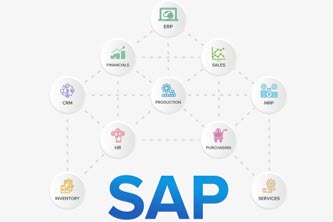4 Ways to Keep Employees Learning while at Home
by Michael Management
 With remote work increasingly becoming the new norm, companies that previously had their entire staff in one building, committing to the same location and workhouse every day, now work in a dispersed and decentralized manner.
With remote work increasingly becoming the new norm, companies that previously had their entire staff in one building, committing to the same location and workhouse every day, now work in a dispersed and decentralized manner.
There are a lot of questions that come with this new normal of working from home, especially for companies that never experimented with it prior to 2020. One of the biggest questions is how to keep employees learning while they’re working remotely.
In this blog, we’ll provide a few answers to that question to help your team continue learning — even when they’re working from home.
1. Understand the Impact of Adjusting to Remote Work
Working remotely has a major impact on the day-to-day operations of a company. But it also makes a major impact on the individual employees working at that company.
This is crucial to understand. The office environment worked as a way to standardize the workday experience for every employee who participated in it.
But with an office gone, now there are many more variables affecting someone’s workday.
These could include professional strains, such as adjusting to more frequent email communication, project management systems, and video calls instead of in-person meetings.
It could also include personal strains, such as watching young children who are home from school or unable to attend daycare for a variety of reasons.
Whatever the reason, working from home requires an adjustment for both a company as a whole and the employees on an individual level. It’s crucial for a manager (and any executive) to understand that this change affects employees differently.
However, there’s some good news in this understanding. You can still standardize elements of your training.
2. Digitize Your Training & Learning Processes
Once you have a grasp of how your team has been impacted by working from home, it’s time to digitize what you can in terms of your training and learning processes.
Learning management systems, project management systems, and regular video check-ins can help grow employee opportunities in ongoing learning.
You can also work with employees to set individual goals that include them learning a new skill or expanding on a current skill via an online application.
This idea works equally well for both ongoing education and onboarding new employees. In many cases, such as using a learning management system, it also allows someone to work through educational materials at a speed that is conducive to their learning style.
As a result, it may take some employees longer than others to progress through educational materials.
But, because they’re learning at their own pace, they can retain information and practice those skills more effectively.
There’s a caveat to this, though. As many managers know, you’ll have some employees who are eager to work through new educational materials. Many may choose to place it on the back burner or ignore it all together.
So how can you ensure that ongoing learning is a priority for your remote team?
3. Set Deadlines (but Not Time Constraints)
When a company works remotely, it can be challenging for managers and leaders to feel like they have a firm hold on the work of their team.
This is because, as we established above, remote work affects everyone differently — including managers.
As a result, it’s no longer possible to walk by someone’s desk and ask them in person how their work is going. Instead, it has to become more structured.
One way to create this structure is to set deadlines for ongoing learning programs to be completed. This can again include learning new skills, improving known skills, or simply increasing someone’s knowledge of different areas of the business.
Deadlines, such as achieving monthly or quarterly milestones, allow someone to keep ongoing learning initiatives at the forefront of their minds so that they can appropriately budget their own time to achieve those goals.
However, it can be counterproductive to set constrain someone’s time. An example of constraining an employee’s time would be for you to tell an employee when in their day they can work on ongoing learning.
This is counterproductive for a few reasons. The first is that employees may have something else they need to do during the times that they’re told to work on ongoing learning. Another issue is that some employees may prefer to front-load or back-load their work accordingly with a deadline.
As a result, it’s often recommended not to tell someone an hourly schedule when they can work through ongoing learning materials. This is more used as a last resort in the event an employee has failed to reach their ongoing learning goals for several timeframes in a row, such as three months, three quarters, and so on.
However, if an employee is starting their ongoing learning journey or progressing well through the materials that they’re using, then there’s no need to give them a constrained schedule.
4. Consider User Experience in All Learning Materials
Finally, now that your team is remote, it’s important to consider the user experience of the materials that you have for ongoing learning.
Are they simple Word docs that only include text? Do they have visualized representations of concepts to help employees understand key points more effectively?
If the answer to these questions (or others like them) is “no,” then it’s worth your time to re-examine the structure and appearance of your learning materials.
Using images and videos to accompany text is an effective way to help learners retain information over long periods of time. This is why textbooks have become increasingly visual in all levels of standardized education, and why many blogs and other outlets use images to supplement their text.
Using these multimedia assets in your own materials may similarly help your employees learn.
Learn Effectively with Michael Management
At Michael Management, we’ve helped teams train digitally for years. We have an immense library of content related to SAP as well as other business and personal skills that can help any ambitious learner improve their skill set on their own schedule.
If you want to start learning — or if it’s time for your team to take its next step in its professional growth — we’re here to help.
by Michael Management
More Blogs by Michael Management

How to Start a Career in SAP Inventory Management
SAP inventory management is an in-demand skill set from large companie...

Related Blogs

10 tips for better listening at work
How often do you really listen to others at work? Effective listeni...

Show off Your SAP Skills: Take an SAP Assessment
Are you a competitive and ambitious professional looking for ways to c...

Accelerating Your Learning through Organized Training
Ongoing learning has become a cornerstone value of many companies throughout...
.png)


